The Enduring Allure of Mid-Century Modern Style
Mid-century modern style is a timeless classic that never goes out of style. Here is what you need to know about this style.
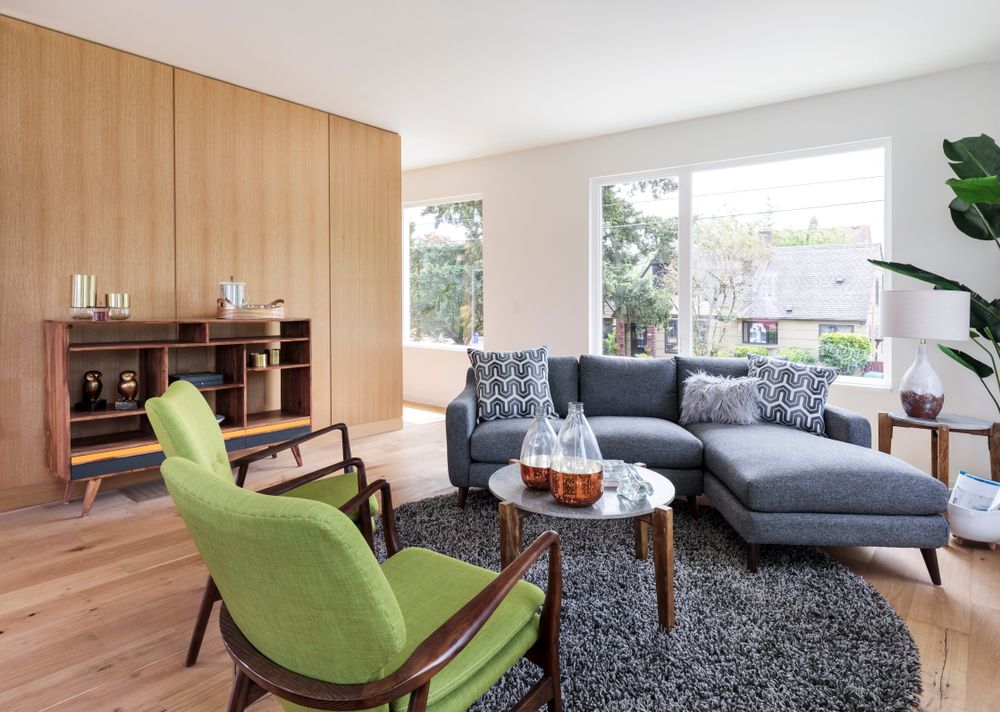
Mid-century modern style is a timeless design style that has been around since, well, the middle of the 20th century. This design movement emerged in the US after World War II and has been gracing our homes ever since. While it has evolved over time, it’s still a design staple used in many interiors today. So, what exactly is mid-century modern design? In this post, we take a look at how this style originated, what makes it so popular and how to incorporate it into your home.
What's in this post:
What is mid-century modern style?
History of mid-century modern design
Distinguishing features of mid-century modern interior design style
Color palette of a mid-century modern style house
Design tips for mid-century modern style homes
What is mid-century modern style?
Mid-century modern style is characterized by clean lines, minimalism and functionality. The main focus of this style is practicality. All furniture and decor elements have a function and not a lot of ornamentation. The design reflects the “form follows function” concept, which means that all pieces of furniture have an intended purpose in the home, and if they don’t, they are unnecessary.
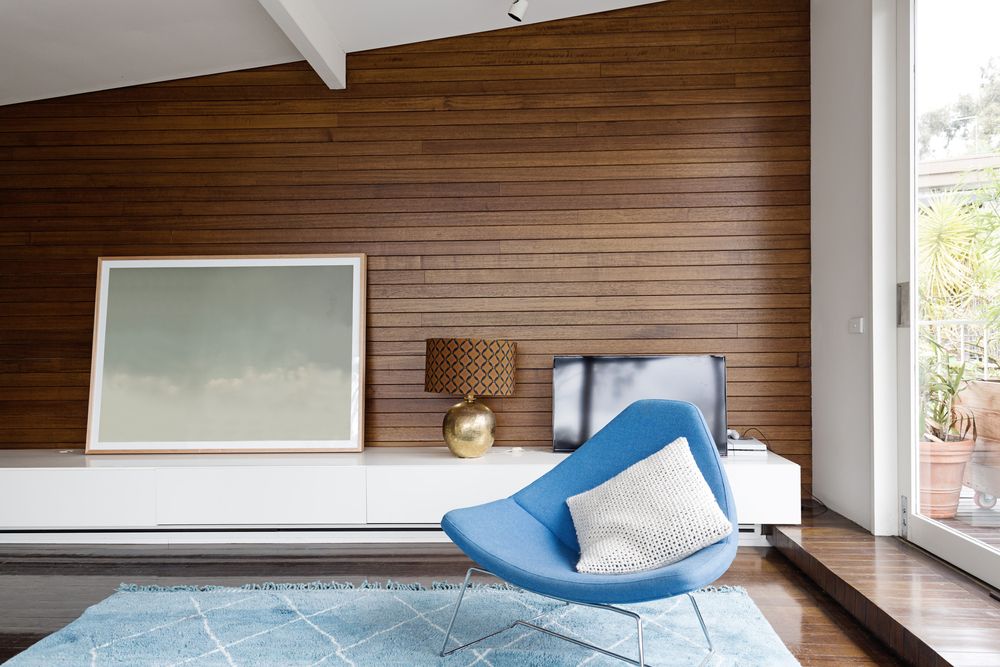

You’ll see a lot of organic shapes, natural lines and mix-and-match materials in a mid-century modern aesthetic. While this might make you think of other styles, like minimalist, Scandinavian or Japandi, these styles came later and have several differences that distinguish them from mid-century modern.
History of mid-century modern design
The mid-century modern style is a post-war movement that reflects the trends and social values of the day. There was a housing boom in America, and there was a need to create practical and affordable homes for the growing population. The designers and architects had to turn to what was available to them to answer that need.
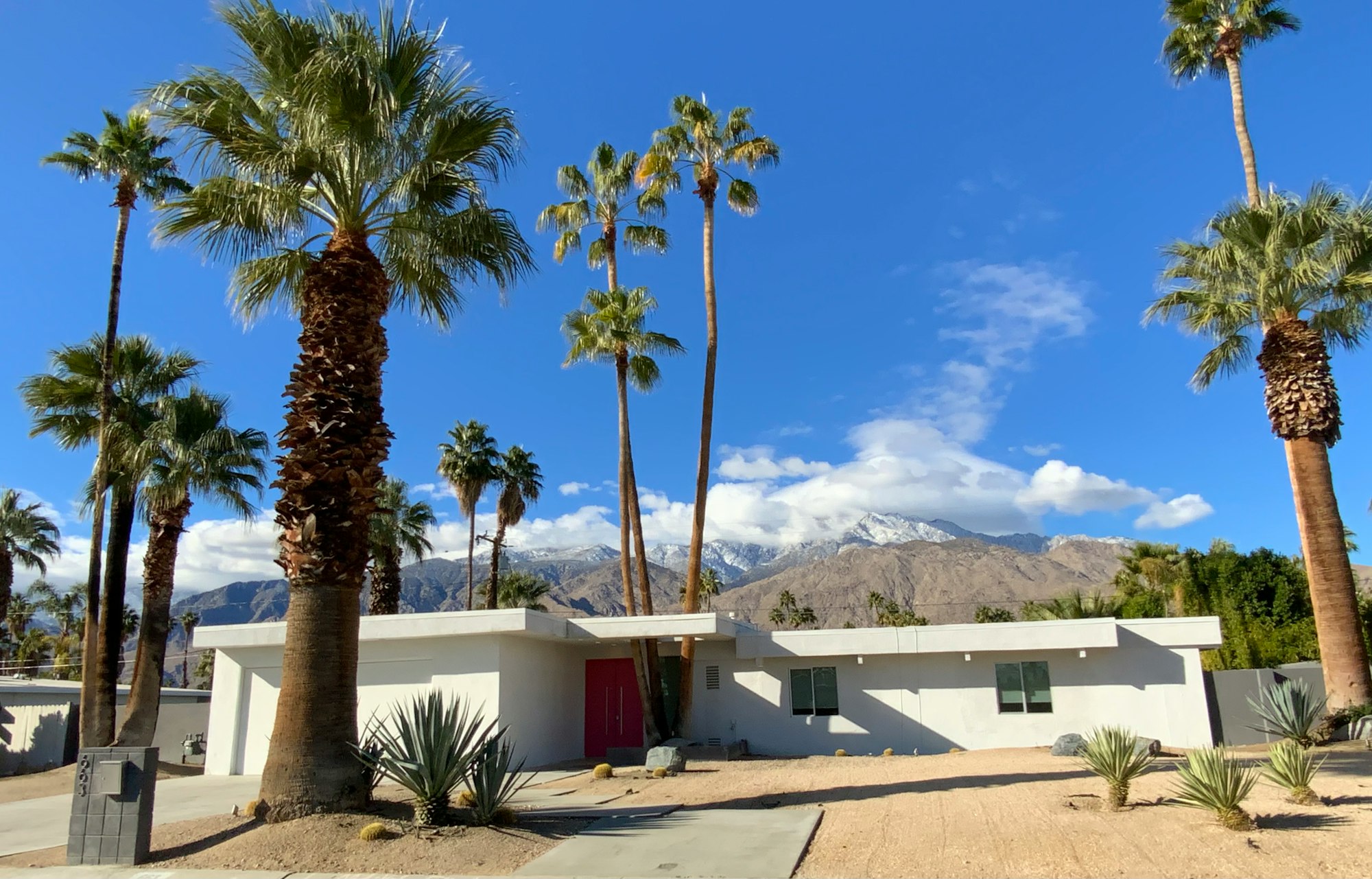
Before the war, most furniture was made with natural materials like wood and fabrics that were built in small batches or customized for the client. The post-war designers embraced manufactured and readily available materials like vinyl, plywood and plastic to create new and innovative pieces of furniture. They also utilized mass production to build quality pieces in large quantities, making them affordable and accessible to more people.
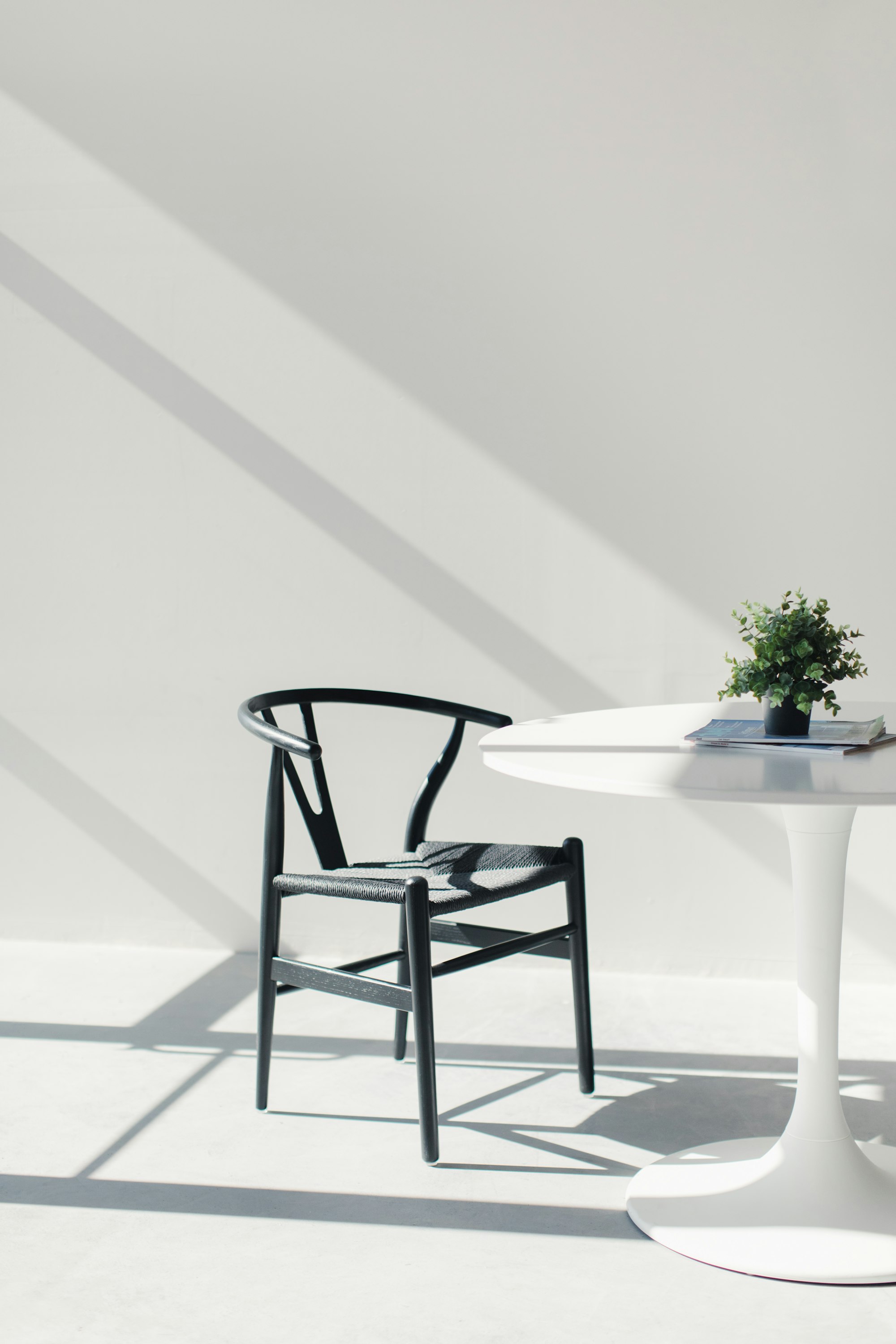

Furniture pieces commonly found in mid-century modern design include iconic pieces like the Eames Lounge Chair, Noguchi Table, and Saarinen Tulip Chair, characterized by their minimalist aesthetic and use of natural materials.
Distinguishing features of mid-century modern interior design style
Mid-century modern style is still popular today as it easily fits in with how we want to live today. The emphasis on functionality over frivolity and classic designs that work with contemporary designs is as appealing today as in post-war America.
As we touched on above, the materials used in mid-century modern design embraced manufactured materials that were not commonly used in the past or were a new invention of the manufacturing process. You’ll find a lot of synthetic materials like vinyl, plexiglass, plywood and wood veneers mixed with fiberglass, plastic, wood and metal.
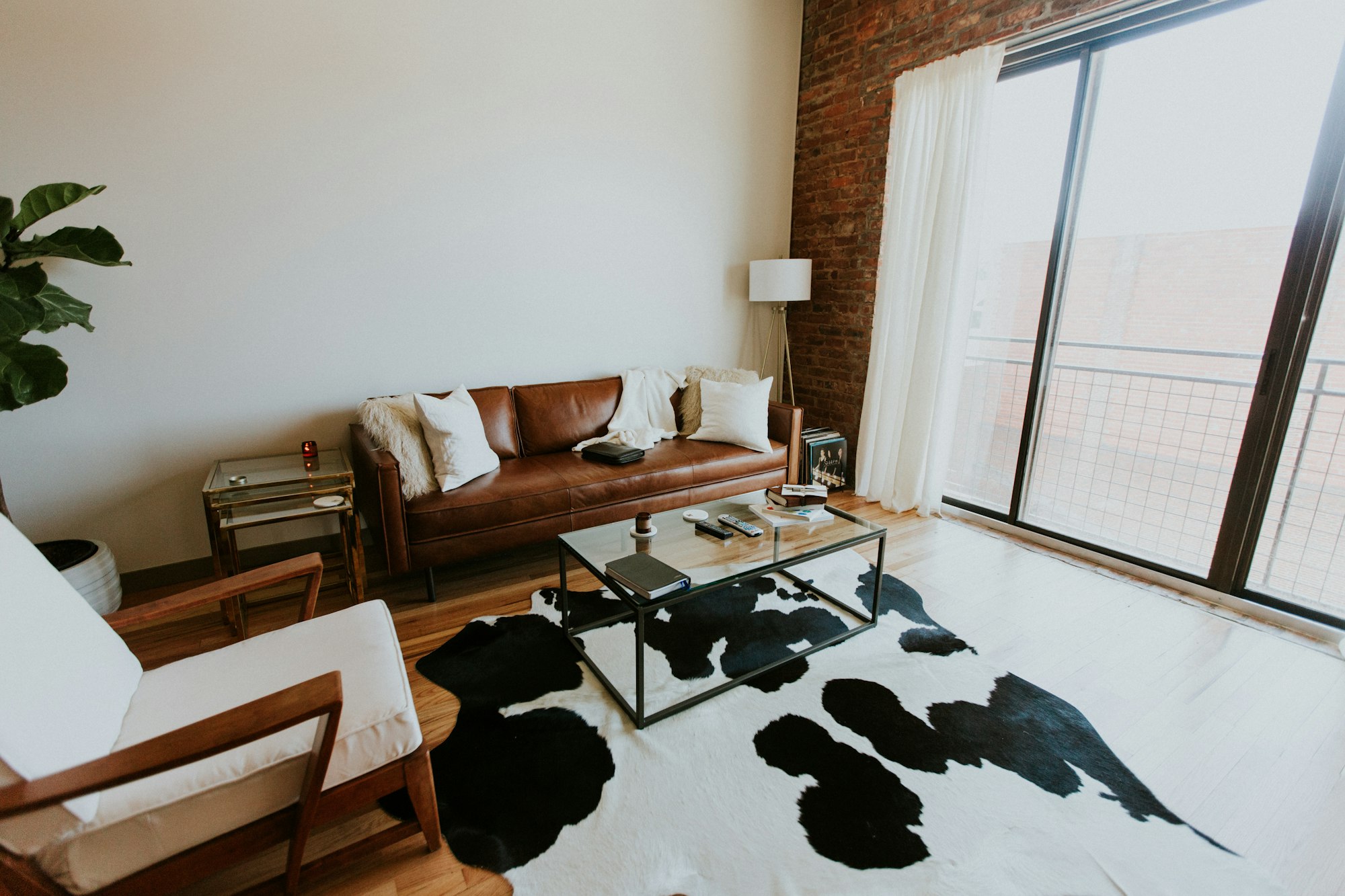
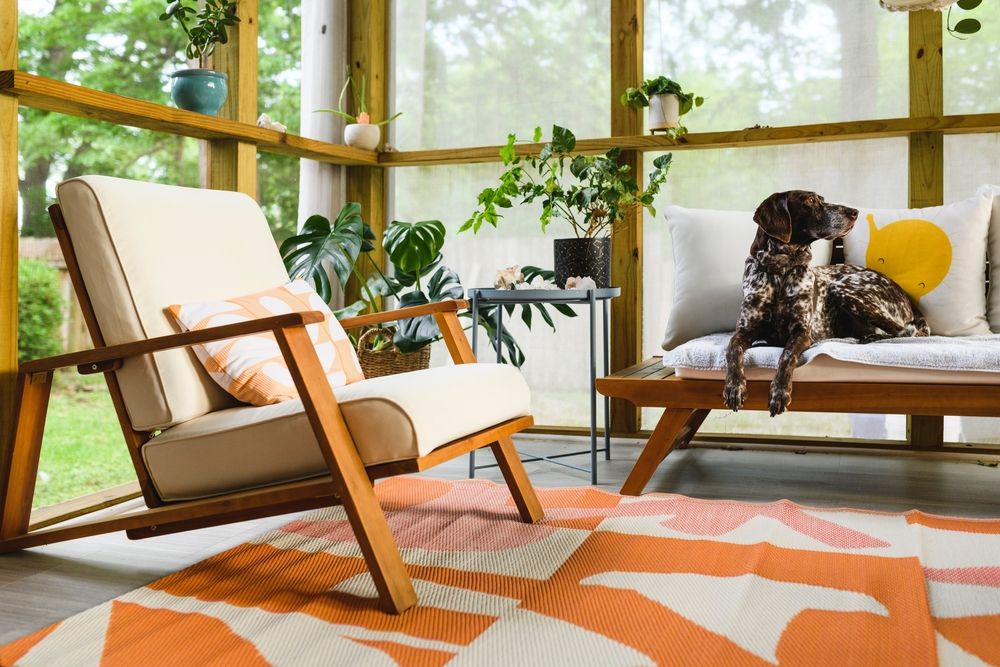
The overall look of mid-century modern is functionality. There is little ornamentation, as the pieces speak for themselves. It’s not to say that there is no decor at all. Plants and large statement pieces are often used in mid-century modern design and act as statement pieces. Prints, clocks and rugs are also frequently used in mid-century modern decor.
Furniture is typically designed with wooden or metal pin-style legs and has simple lines and a defined shape. You’ll also notice many geometrical shapes using mixed materials like wood, leather, plastic and vinyl.
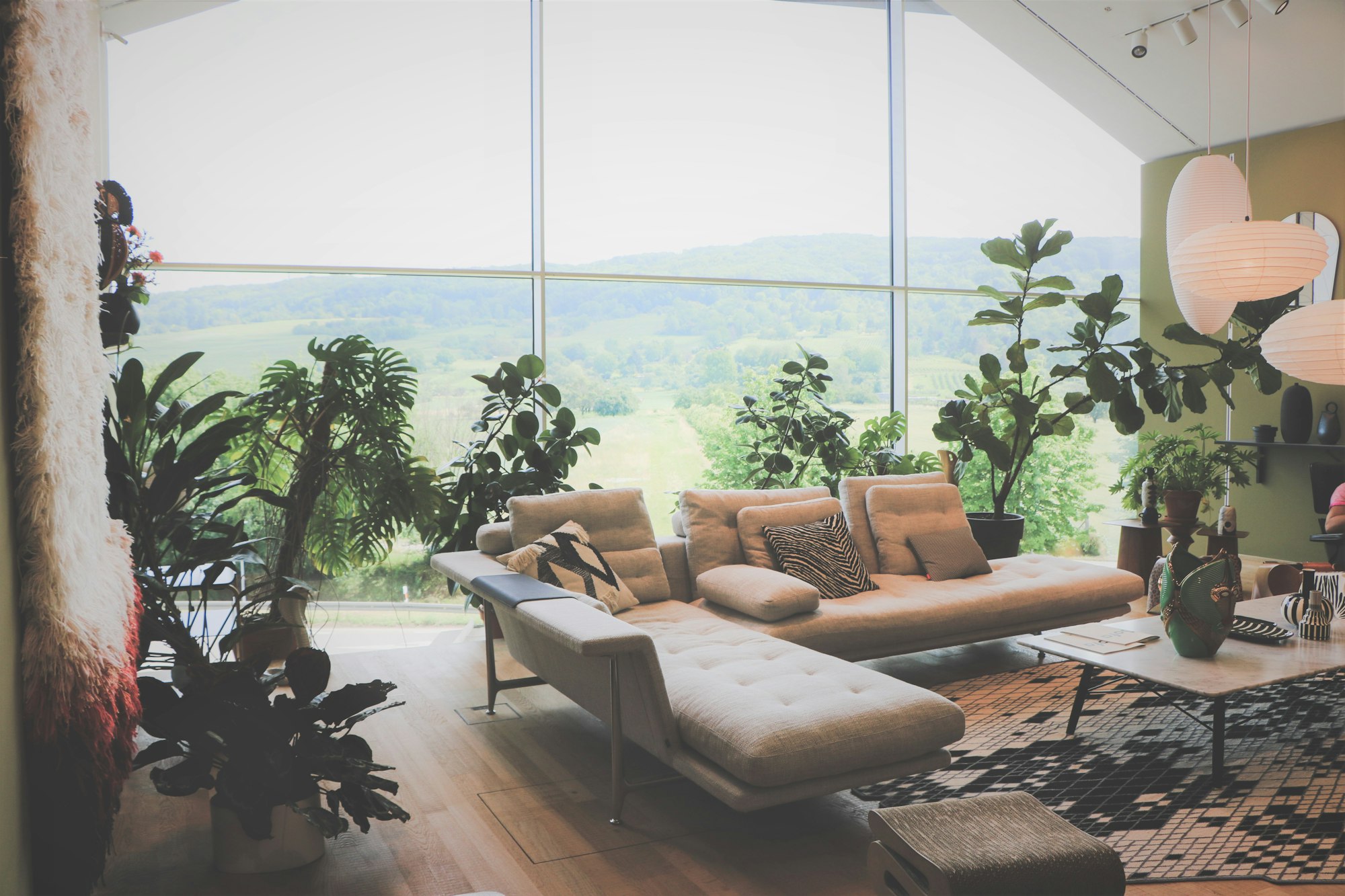
While mid-century modern architecture focused on manufactured materials in decor and building materials, it also looked to nature. In mid-century homes, we see a lot of large windows, exposed beams, brick and wood panels. This design allowed the fusion of the outdoors and the indoors.
Comparing mid-century modern to other popular styles:
The mid-century modern look is a very distinct one, especially when compared with other popular design styles. While there might be some similarities between some of these decor and design trends, they are all very different. Here is how mid-century modern design compares.
Color palette of a mid-century modern style house
The mid-century modern color palette often featured bright and saturated colors in the 1950s and more earthy tones in the 1960s. Some of the most popular shades of this style include earthy colors like bright oranges, reds, yellows and browns, but you’ll also find plenty of shades of green, blue and even neutrals.
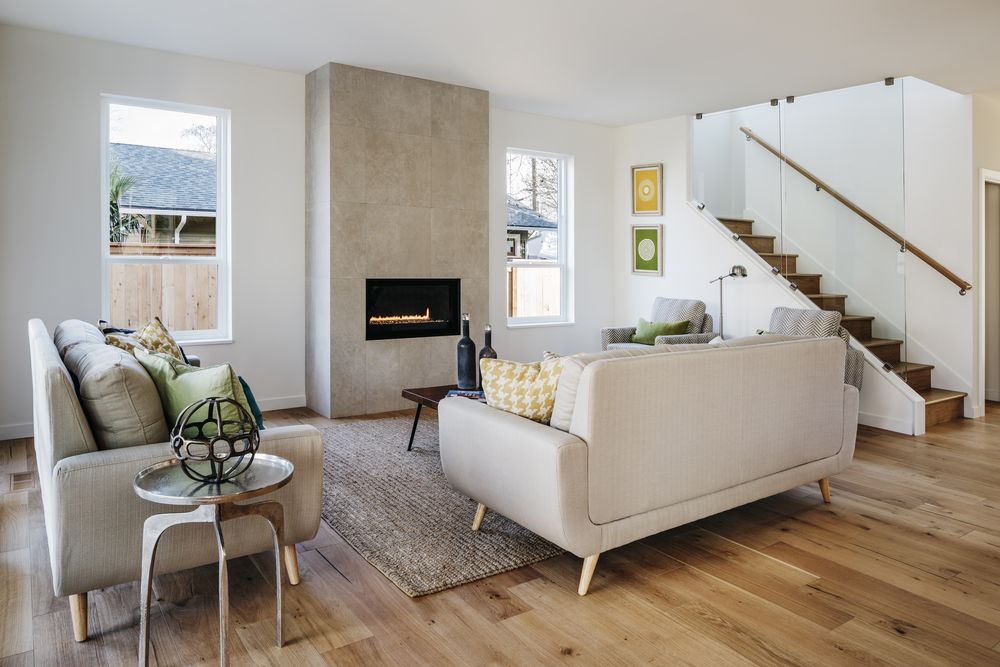
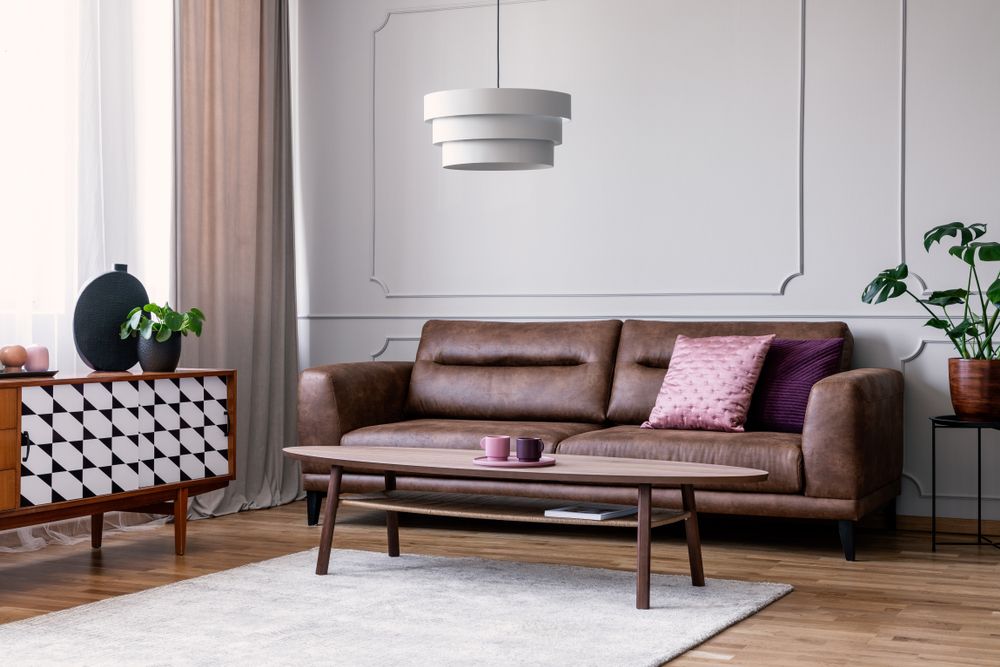
To create a mid-century modern aesthetic in your home, opt for neutral pallets with pops of colors or classic combinations of olive green and pale pink or mustard greens and avocado. You can easily add that vibe to your decor with an accent piece like a couch or abstract prints in bold colors to create a visual focus.
Design tips for mid-century modern style homes
You can easily add a mid-century modern style to your home. Thanks to the popularity of this style, you can easily find a great selection of furniture and decor items in stores today. The best way to incorporate mid-century modern is to do it strategically. After all, you want your home to look modern and comfortable, not like a time capsule from a different time. Here are some tips to help you avoid making that mistake.
Pick a statement piece
Select one or two statement mid-century modern pieces and build your decor around them. That can be a classic like an Eames chair, a couch or a teak cabinet. Assemble the rest of the room with furniture and decor items that complement and highlight those pieces. You can also add large plants and skip the blinds or window coverings to open up your room and tie in that mid-century vibe.
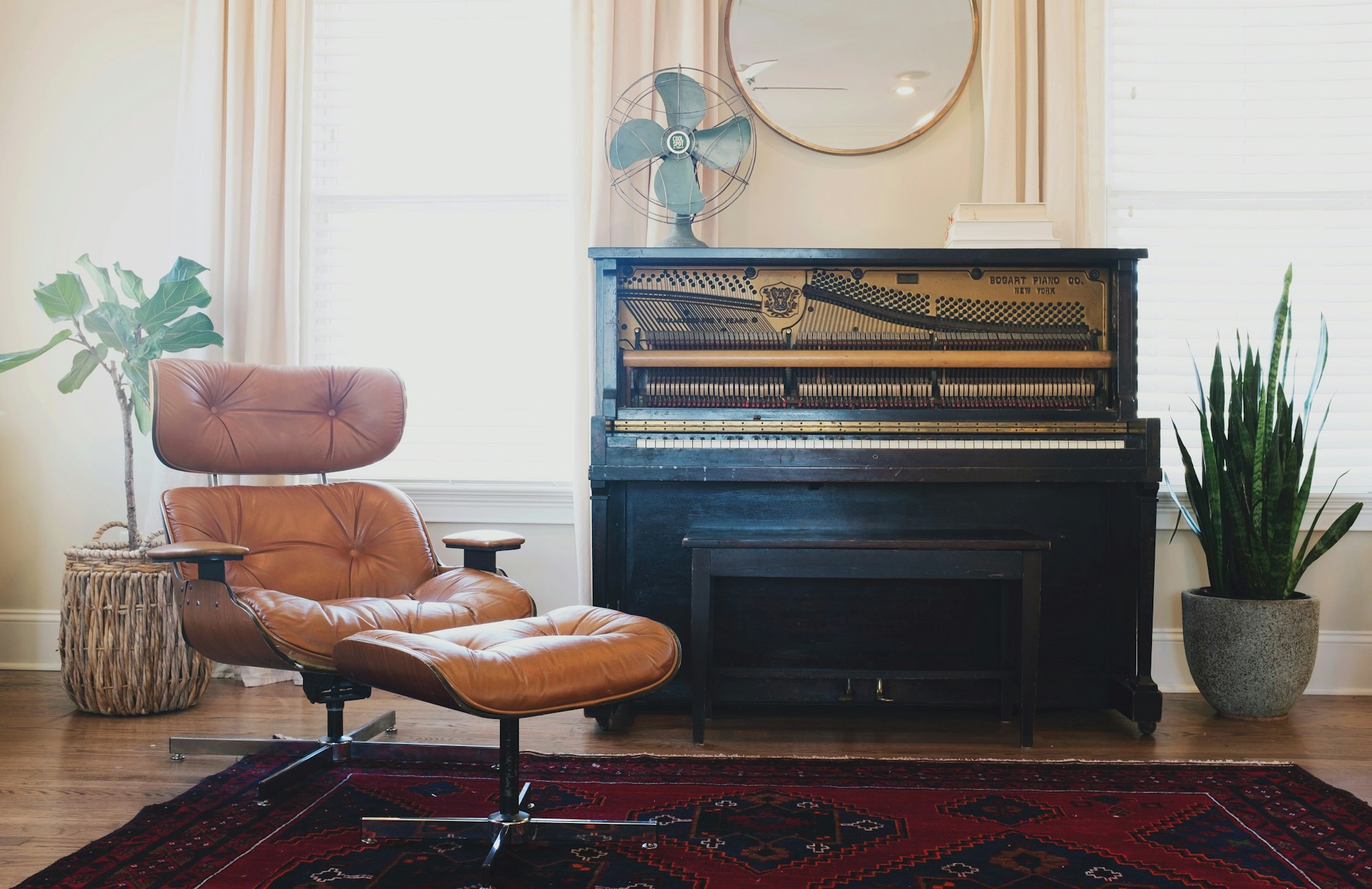
Play with color
If you’re not ready to commit to a full mid-century color palette, you can easily incorporate these hues into your home. You can combine statement mid-century pieces with saturated colors, like an orange couch or dark blue accent wall. Graphic artwork with bright colors, bright rugs or accent pillows is a great way to add playful color to your decor.
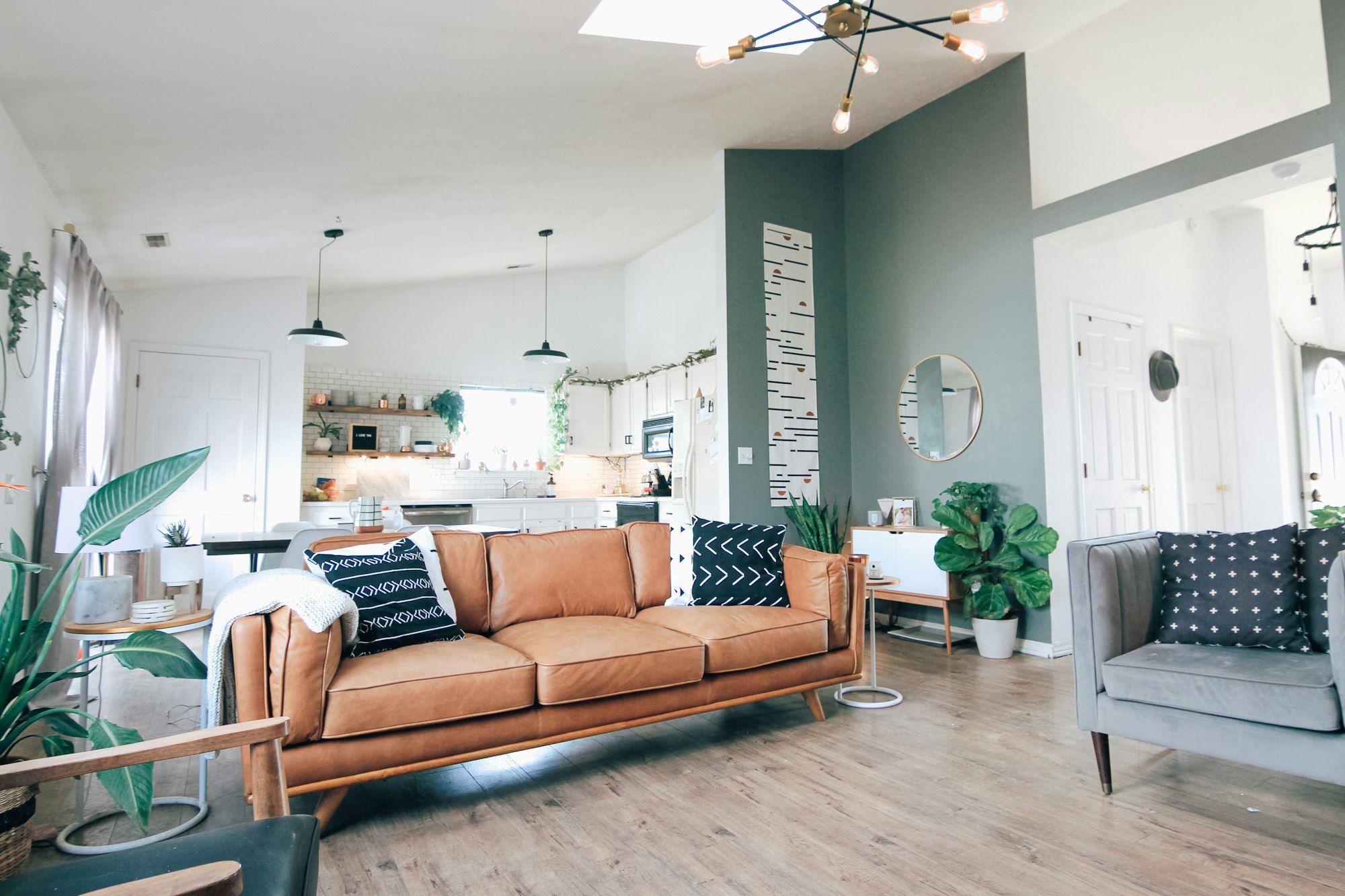
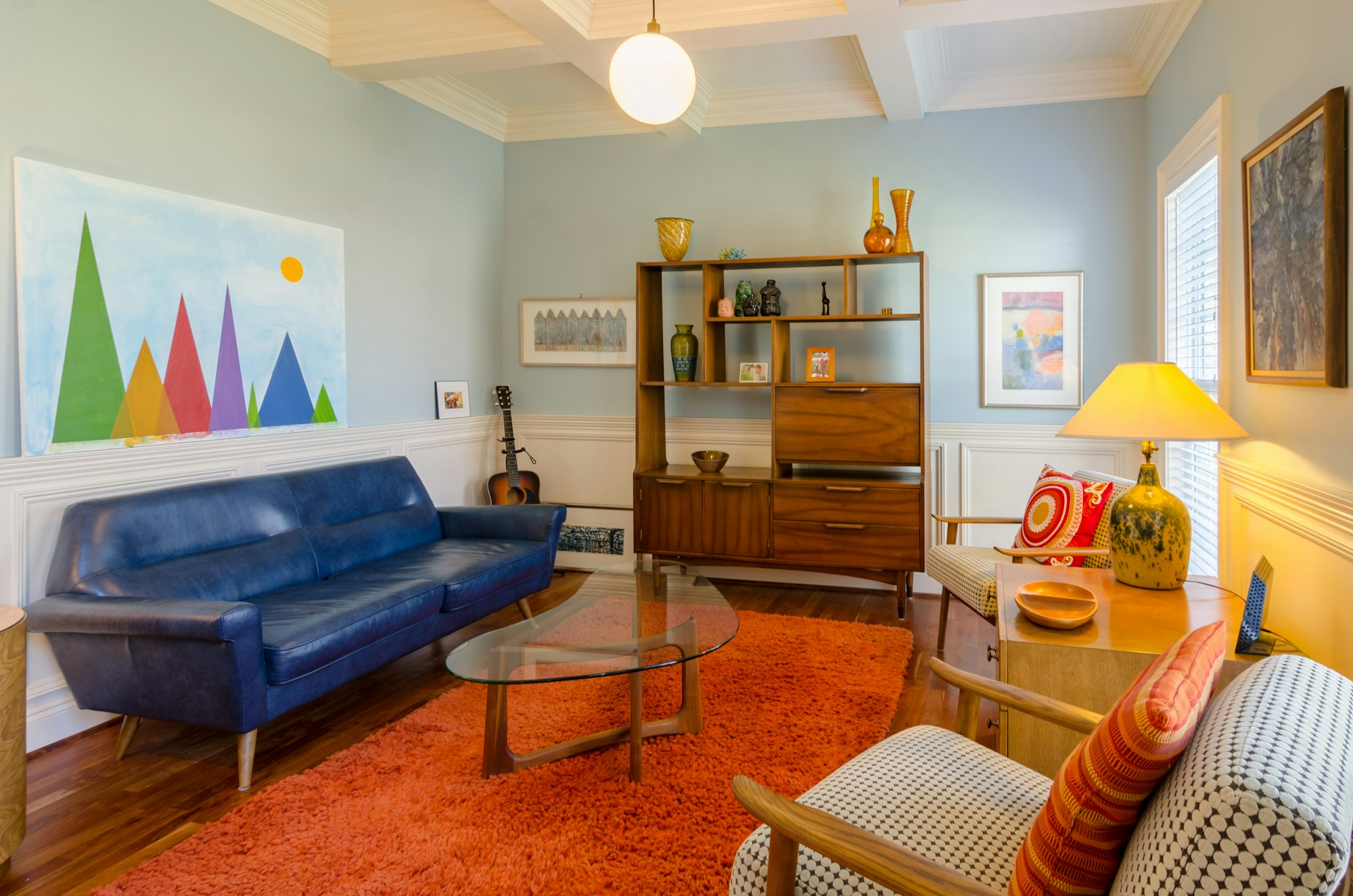
Mix it with other styles
Combine mid-century pieces with other styles to create a unique look to avoid your home feeling dated. Moroccan poufs or rugs, commonly used in the Boho style, are a great addition to the mid-century modern style that can make it more playful and bright. Minimalism and industrial styles are alternatives you can combine with mid-century to give it a personal touch that feels comfortable and modern.
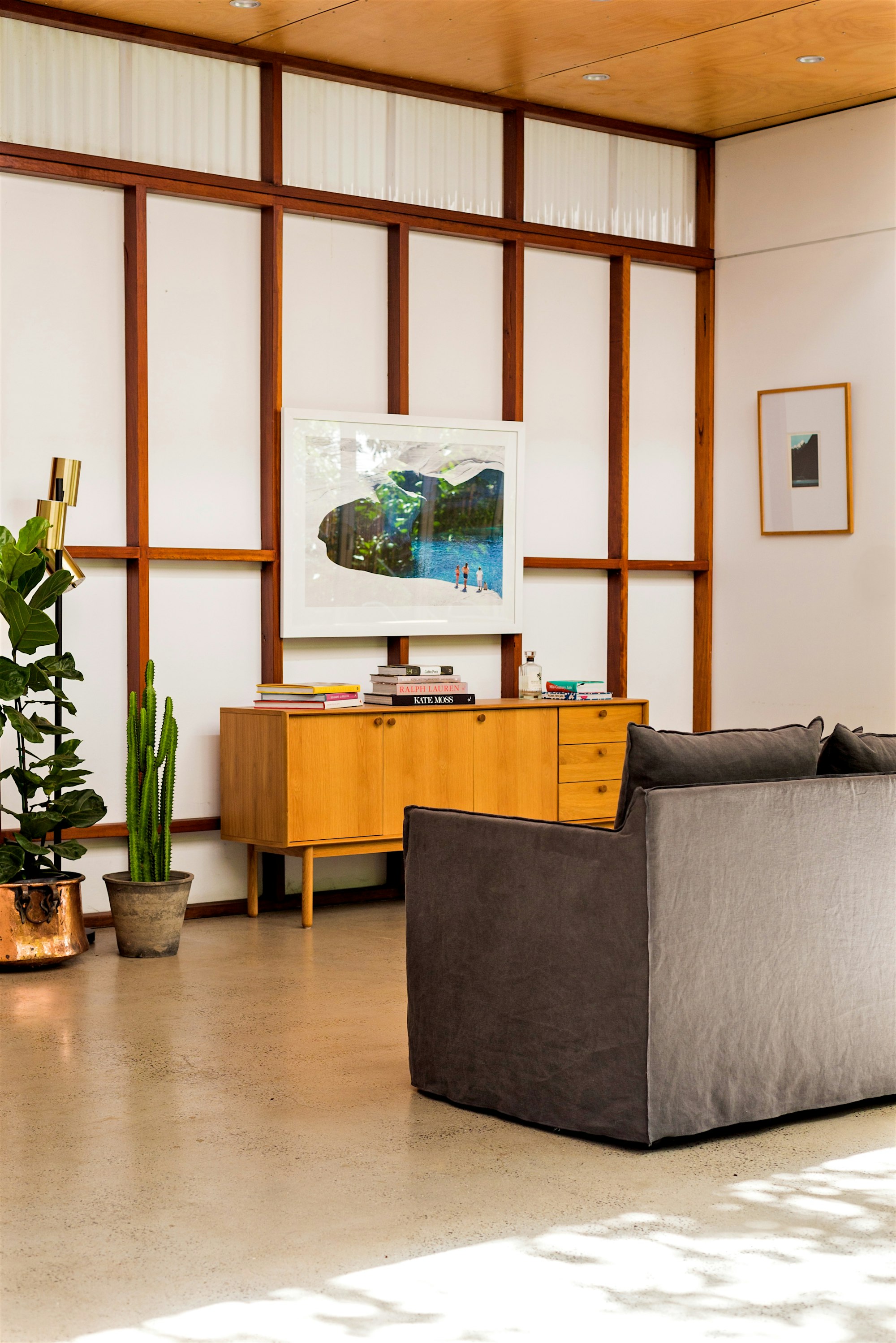
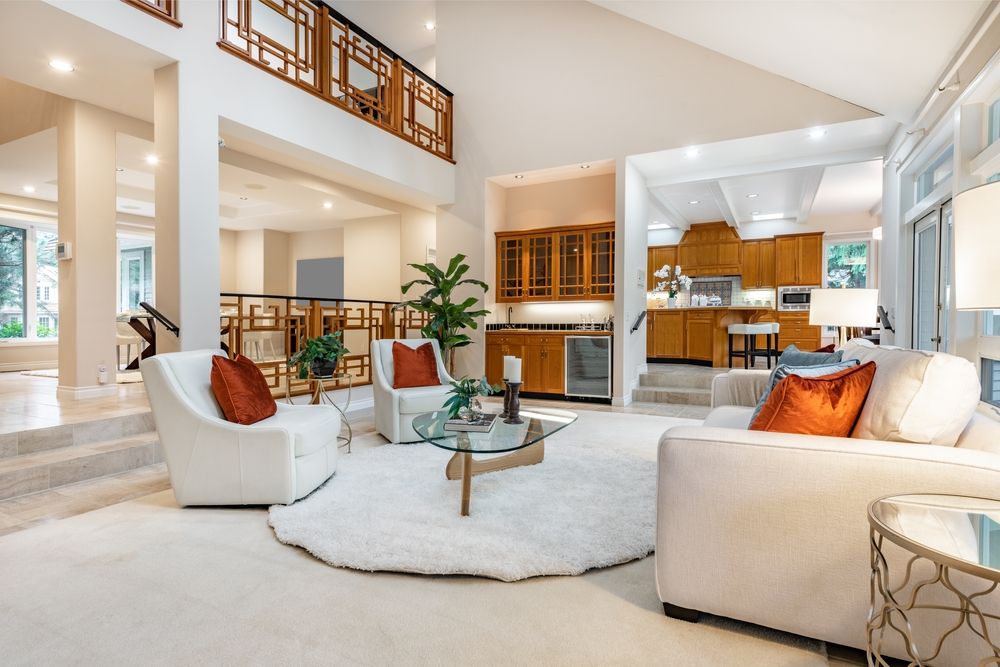
Design ideas for creating a mid-century home
The mid-century modern style works in every room in the house, so you can choose to incorporate it in select spaces or throughout your whole home. Here are some ideas to help you get started.
Mid-century modern furniture style
Furniture is a great way to incorporate mid-century style into your home and achieve that iconic look. Look for furniture with clean lines, a minimalist design, and pieces with sculptural quality and organic curves or geometric shapes. Choose items that have a low profile and are simple yet functional. Look for upholstery with bold, graphic prints or a pop of color to add interest.
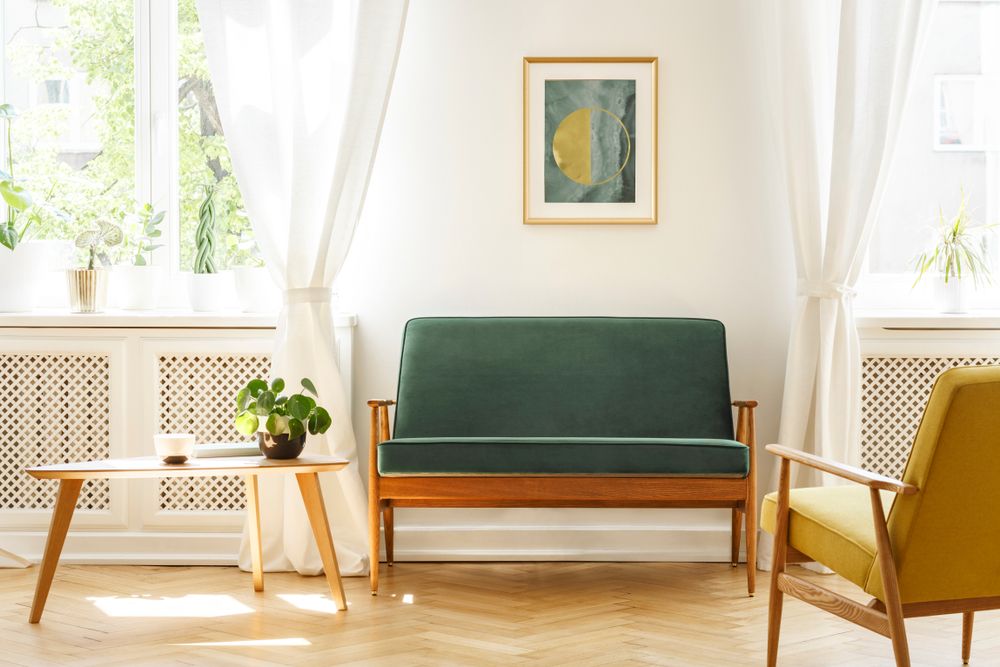
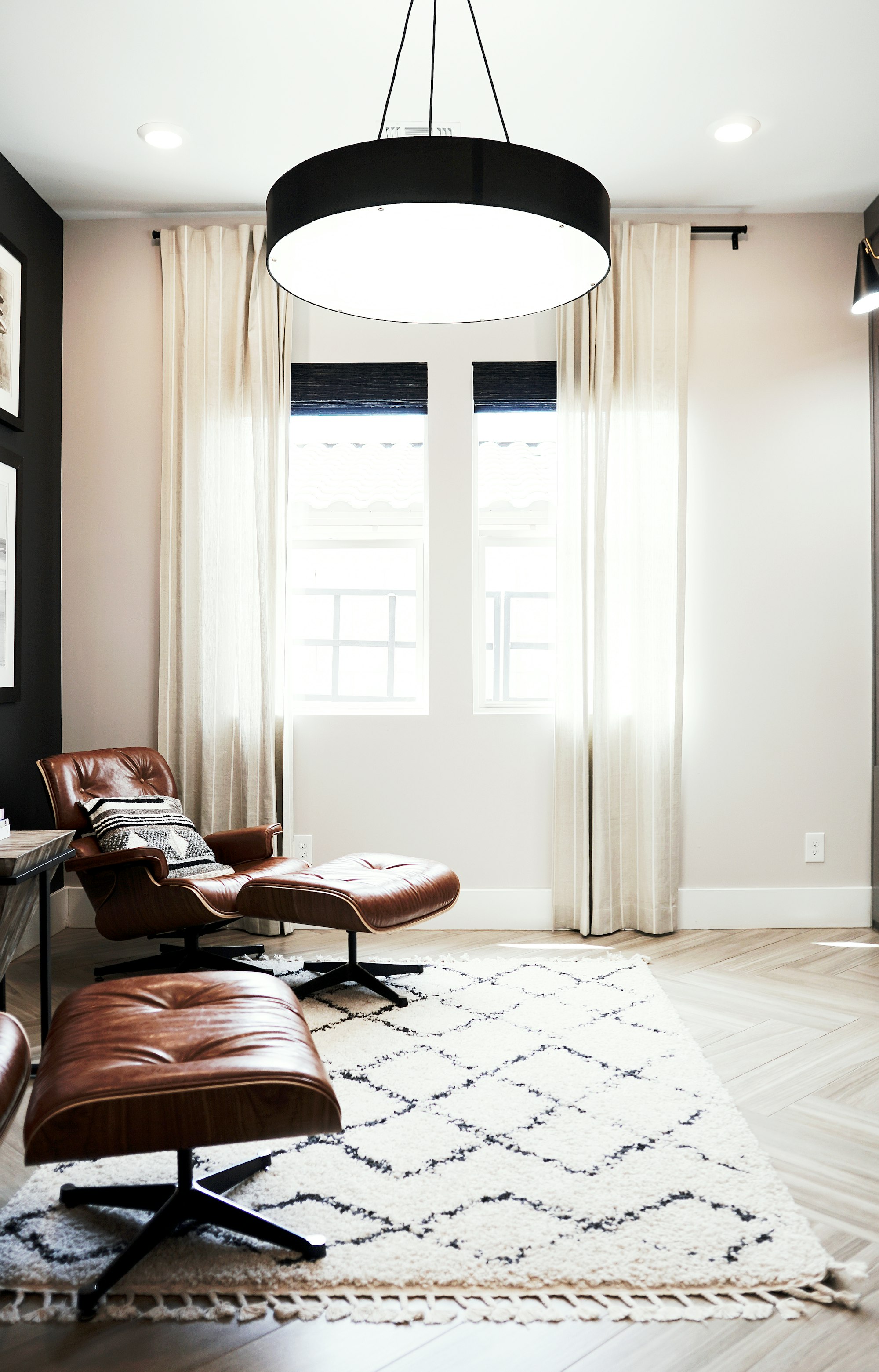
When shopping for mid-century modern furniture, look for quality craftsmanship and materials that will last over time. Some popular mid-century modern furniture pieces include the Eames Lounge Chair, the Saarinen Tulip Table, and the Noguchi Coffee Table. Additionally, consider adding mid-century modern accessories like geometric rugs, a retro clock, or a statement vase to complete the look.
Mid-century modern style kitchen
To incorporate mid-century modern style into a kitchen, choose furniture and appliances with a sleek and minimalist design, with clean lines and geometric shapes. Opt for wood, metal, and glass to create a sleek and stylish look.

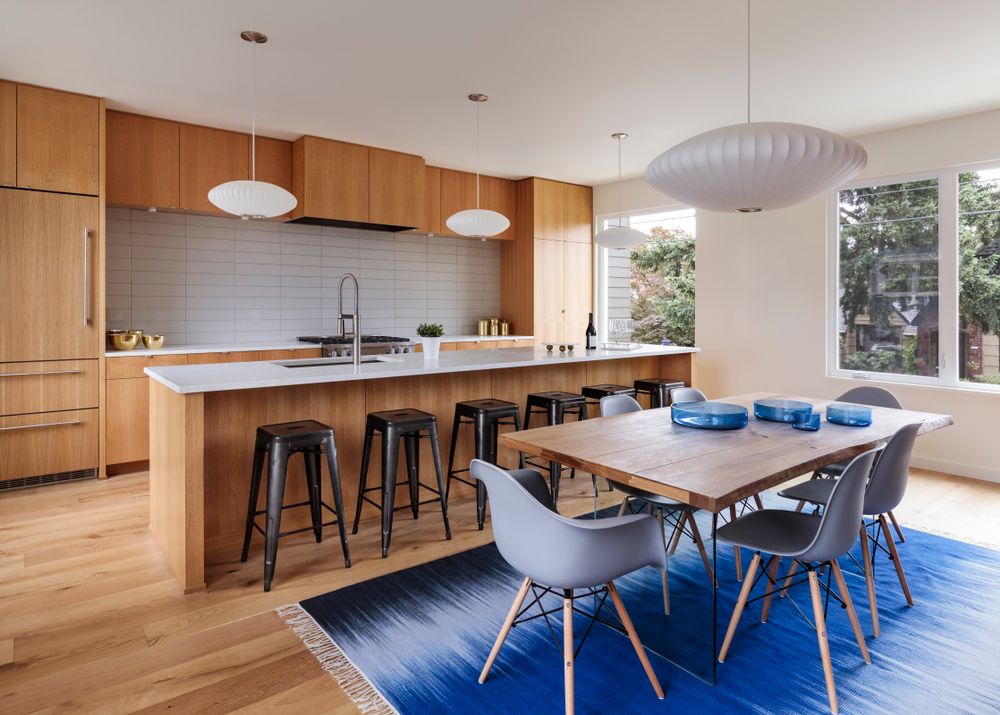
Consider adding a pop of color with bold, retro-inspired hues like avocado green, mustard yellow, or burnt orange. Use statement lighting fixtures like a Sputnik chandelier to add a touch of mid-century flair. Finally, add organic elements like plants or natural wood accents to soften the look and create a welcoming atmosphere.
Mid-century modern style bedroom
To incorporate a mid-century modern style into a bedroom, look for low-profile furniture with wooden or metal legs, simple lines and orgnic shapes. Opt for pieces made out of wood and incorporate round-shaped mirrors and natural palettes.
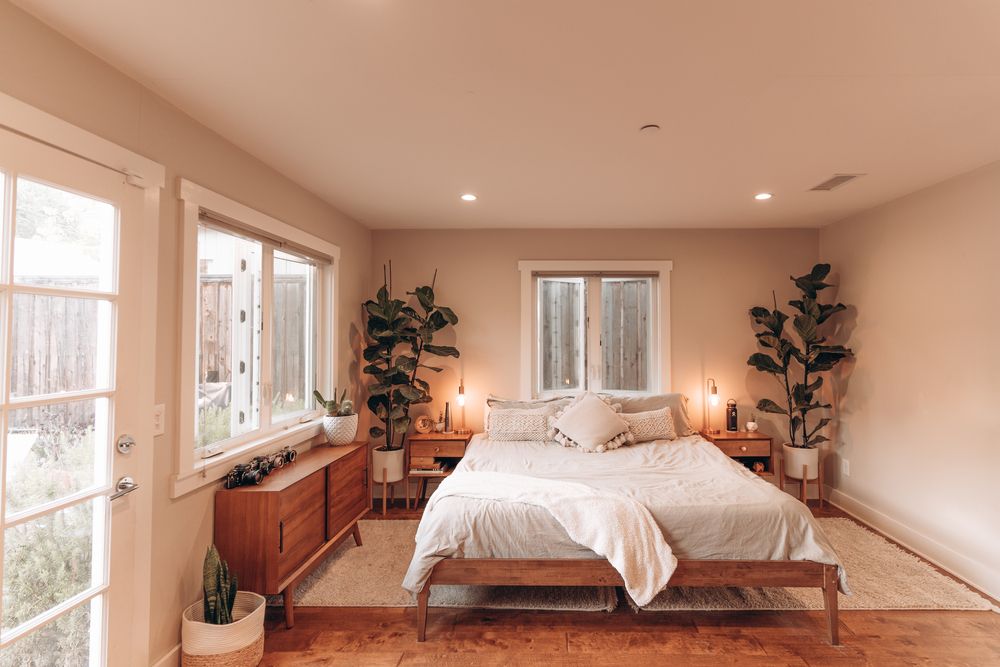
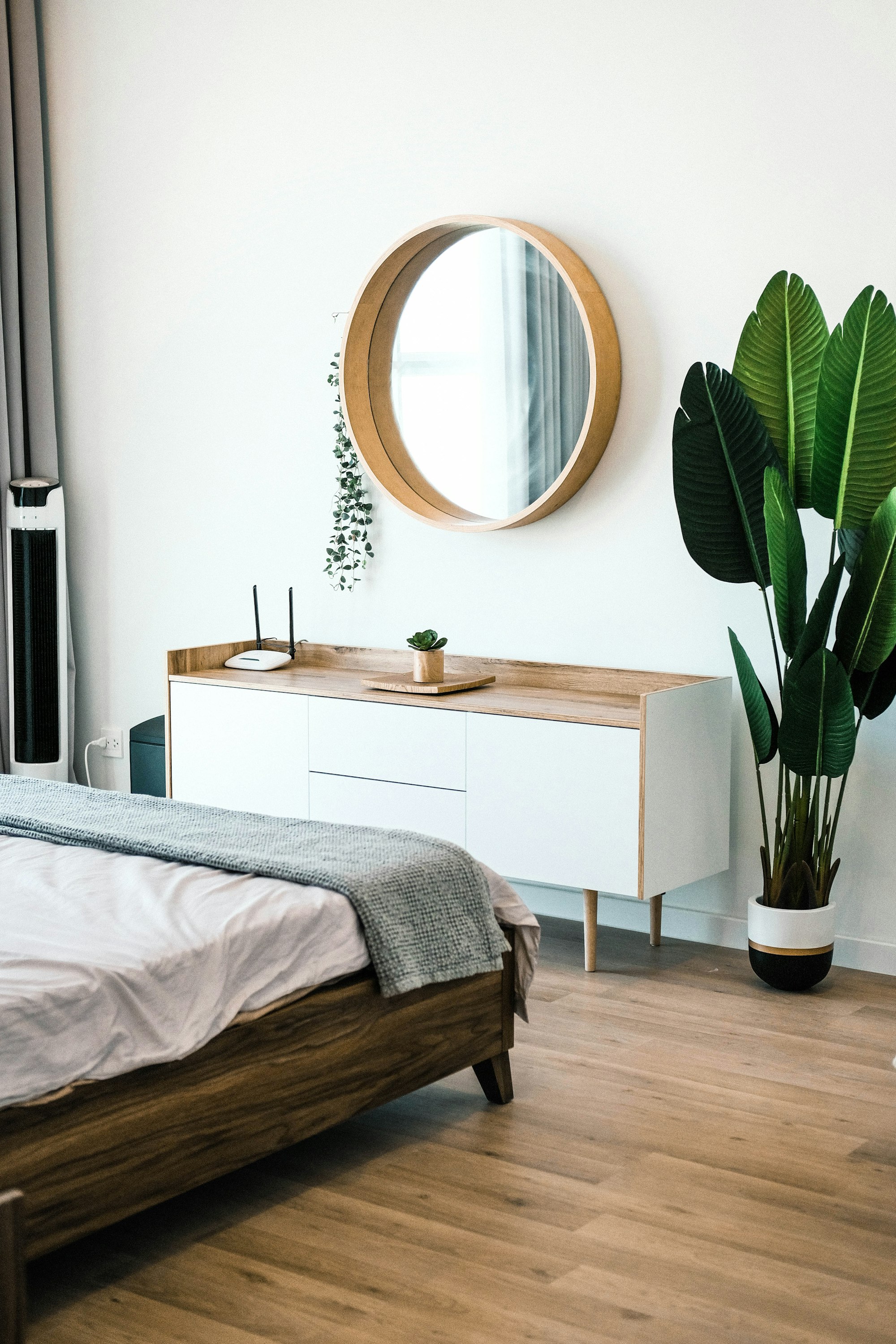
Add lighting with sculptural shapes like a tripod floor lamp or a pendant light to add visual interest. You can also use abstract art or graphic prints to decorate the walls and add cozy textures with a shag rug or a faux-fur throw. Finally, add some natural elements like potted plants or fresh flowers to bring a touch of the outdoors inside and create a calming atmosphere.
Mid-century modern style living room
Your living room is where the mid-century modern style shines. Select furniture with clean lines and organic shapes, such as a low-profile sofa, signature coffee table or a statement lounge chair with a sculptural design. Look for natural materials like wood, leather and metal to create a warm and inviting atmosphere.
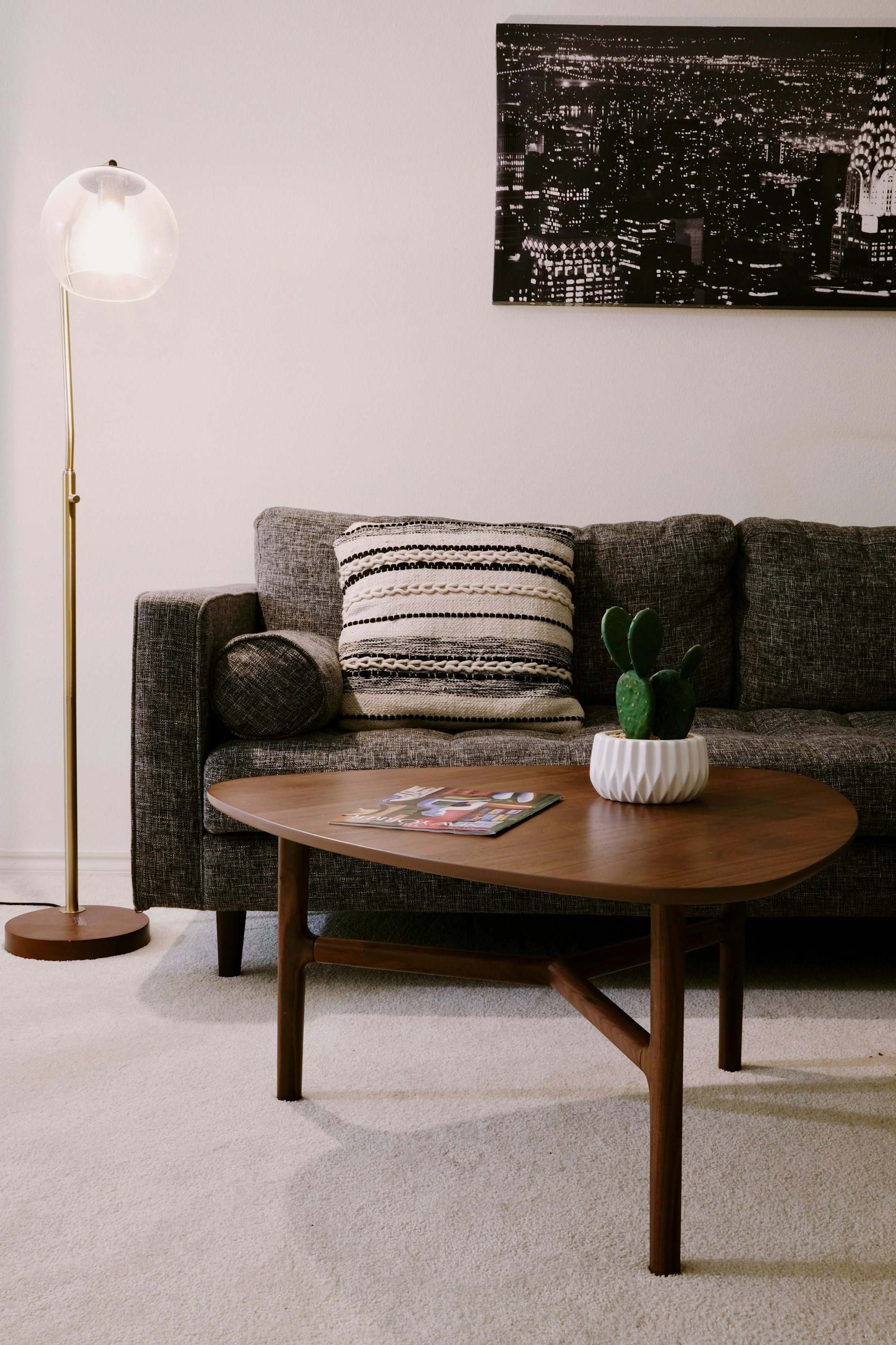

Incorporate statement lighting fixtures, such as an Arco floor lamp with a metallic finish or a Sputnik-style chandelier, to create a focal point in the room. Add pops of color with bold accent pillows or a statement rug. Finally, add some natural elements like a potted plant or large windows to add some nature and blend your indoor and outdoor surroundings.
Mid-century modern ranch-style homes
Mid-century modern ranch-style homes are a classic example of mid-century architecture. These homes are typically one-story, low-slung, and feature a simple yet functional design. They have horizontal lines and large windows that emphasize the connection to the outdoors. These homes often have an open floor plan focusing on simplicity and functionality.
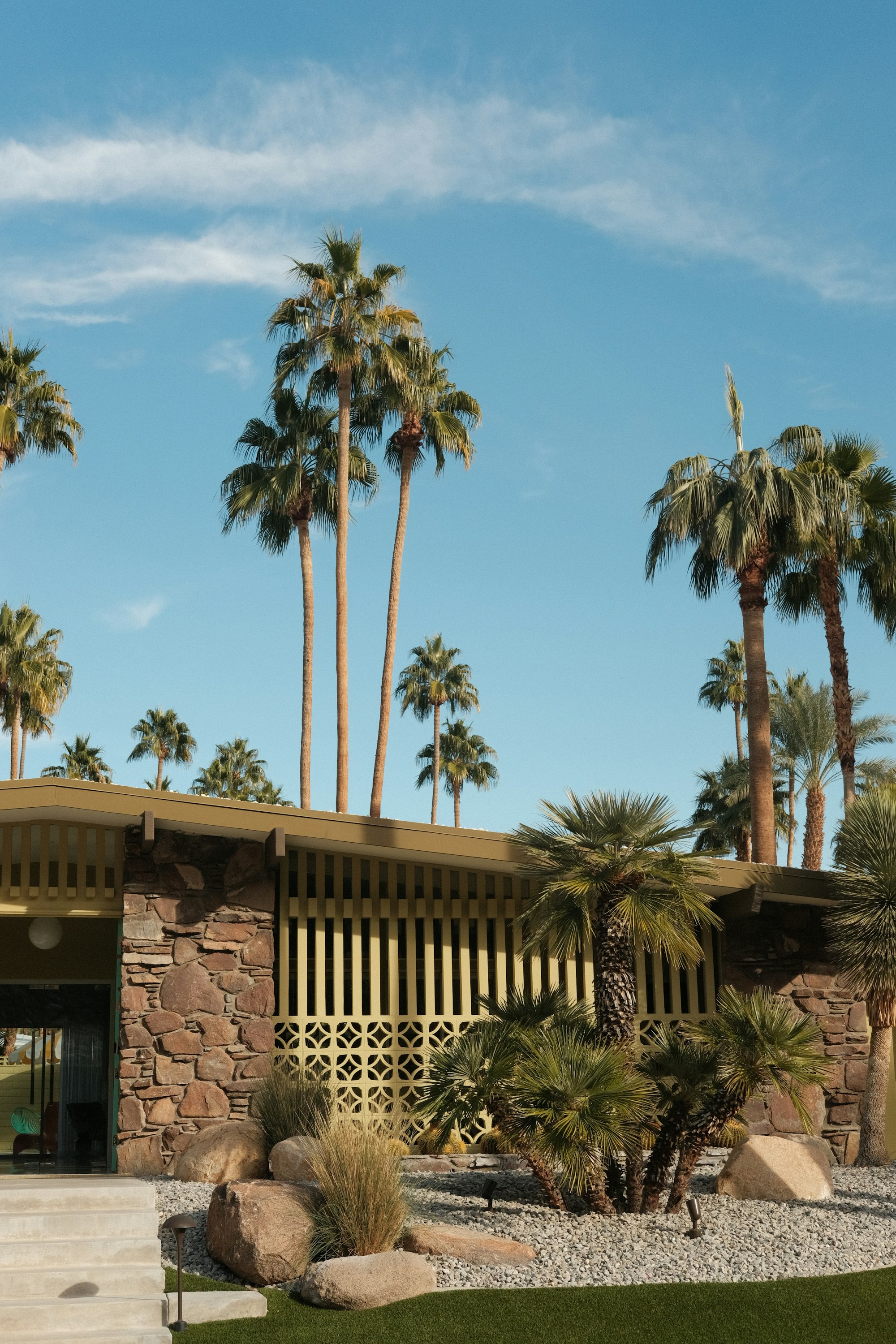
The materials used in mid-century modern ranch-style homes typically include natural wood, brick, and stone. They often feature distinctive elements like decorative screen blocks and flat or sloping roofs. Overall, mid-century modern ranch-style homes are known for their understated elegance and timeless design, making them a popular choice for homeowners today.
Conclusion
The enduring appeal of the mid-century modern style is a testament to the innovation and creativity of interior design of the middle of the 20th century. It was a time of prosperity and growth, a new beginning and a departure from the past. What makes mid-century modern style so appealing is the simple lines, functional design and creative use of materials. There is also a sense of nostalgia that makes this style appealing and comfortable, playing on the memories of a different time.
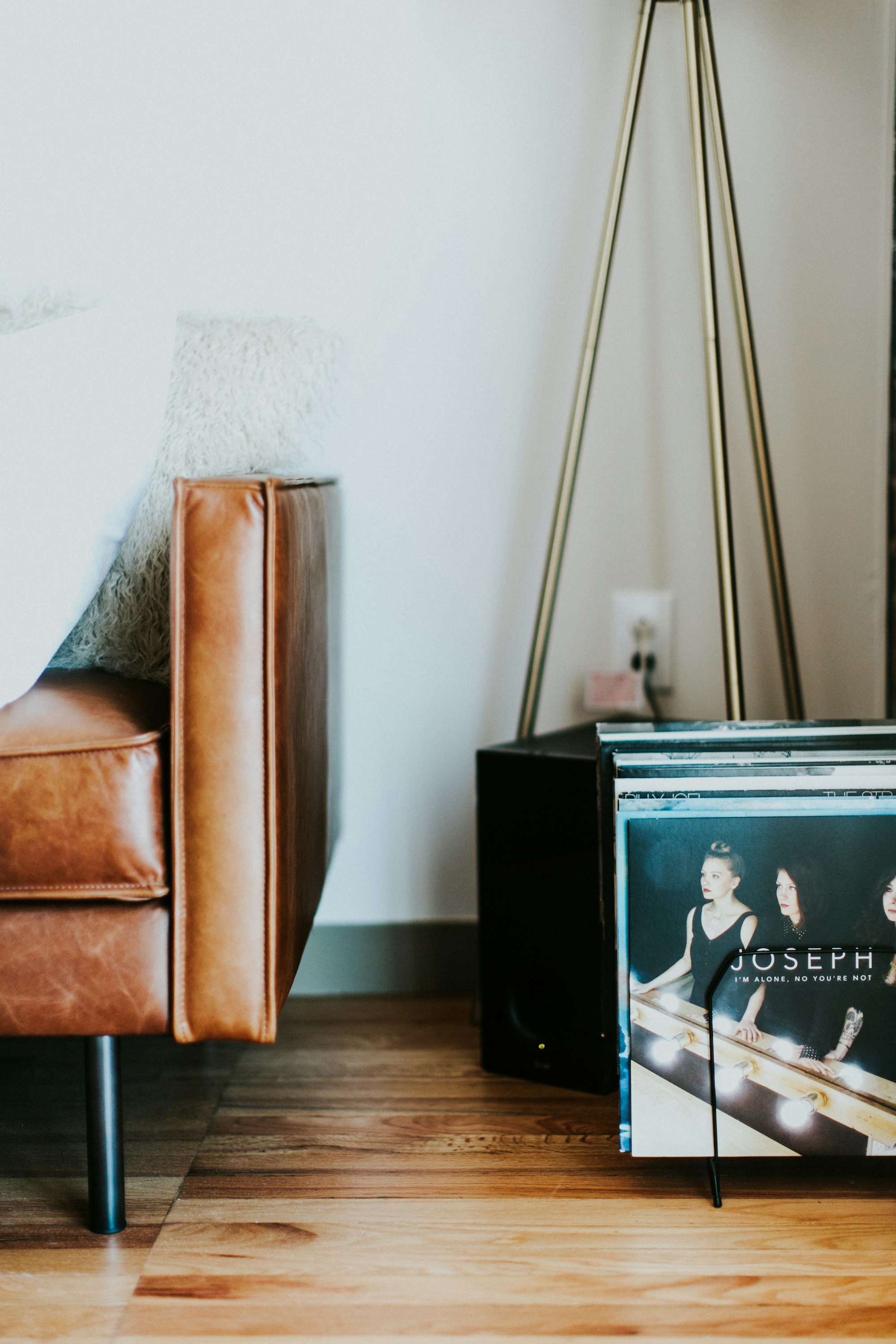
We hope this overview of the mid-century style offers you a better understanding of what makes it popular and how to incorporate it into your home. Want to try on this style aesthetic before you commit? Design your perfect mid-century interior with Planner 5D and embrace a timeless style that works in any space.
FAQ
Is mid-century modern going out of style?
Mid-century modern is a popular design style that shows no signs of going out of style. It has clean lines, simple shapes and a timeless aesthetic that make it a versatile and enduring choice for modern interiors.
What design style is opposite mid-century modern?
The design style that is opposite to mid-century modern is maximalism. It emphasizes bold colors, intricate patterns and ornate details, creating an eclectic and layered look. In contrast, mid-century modern focuses on simplicity, minimalism and functionality.
How to combine white beach-style furniture with mid-century modern decor?
To combine white beach-style furniture with mid-century modern decor, consider using natural wood accents, such as a mid-century modern coffee table, and bold geometric patterns in neutral tones. Add pops of color with vintage textiles or modern artwork to tie everything together.
What is the difference between California Ranch and mid-century modern-style homes?
The main difference between California Ranch and mid-century modern-style homes is the architecture. California ranch homes are characterized by low-slung roofs, open floor plans, and large windows that blur the line between indoor and outdoor living. Mid-century modern homes, on the other hand, feature flat or gabled roofs, clean lines and minimal ornamentation.
What kind of wood is used in the mid-century modern style?
You'll often find light to medium-toned woods, such as teak, walnut or oak, used in mid-century modern style. These woods are known for their durability, natural beauty, and ability to complement the clean lines and simple shapes of mid-century modern furniture.
What is the style before mid-century modern?
The style that preceded mid-century modern is known as Art Deco. It emerged in the 1920s and 1930s and was characterized by geometric patterns, bold colors, and the use of materials like glass, metal and plastic. Art Deco was popular in architecture and design and is still celebrated for its elegance and glamour.
